A hydrocarbon 'X' takes up two molecules of hydrogen and is converted into a saturated hydrocarbon. On ozonolysis, X gives a mixture of three carbonyl compounds namely, acetaldehyde, acetone and propan-1,3-dial. Assign structure to compound X.
To determine the structure of hydrocarbon 'X', we can follow these steps:
Step 1: Analyze the Information Given
We know that hydrocarbon 'X' can take up two molecules of hydrogen and is converted into a saturated hydrocarbon. This suggests that 'X' has at least one double bond or a triple bond, as these types of bonds can be hydrogenated to form a saturated compound.
Step 2: Identify the Products of Ozonolysis
The ozonolysis of hydrocarbon 'X' yields three carbonyl compounds: acetaldehyde (C2H4O), acetone (C3H6O), and propan-1,3-dial (C3H6O2). The presence of these products indicates that 'X' likely contains multiple double bonds or a specific arrangement of carbon atoms that can yield these compounds upon cleavage.
Step 3: Determine the Structure of 'X'
To deduce the structure of 'X', we can consider the carbon skeleton that would yield the products mentioned.
1. Acetaldehyde (CH3CHO) suggests that there is a terminal carbonyl group.
2. Acetone (CH3COCH3) indicates that there is a carbonyl group between two methyl groups.
3. Propan-1,3-dial (CH2(CHO)CH2) suggests that there are aldehyde groups at both ends of a three-carbon chain.
Given these products, we can propose that 'X' has a structure that includes two double bonds. A reasonable structure that fits this description is 2-pentene (C5H10) or a similar compound that can yield the mentioned carbonyl compounds upon ozonolysis.
Step 4: Construct the Structure
The structure of 'X' can be represented as follows:
CH3∣CH2=C−CH2−CH=CH2
This structure has two double bonds. Upon ozonolysis, it would break down to yield the three carbonyl compounds specified.
Step 5: Verify the Hydrogenation
When 'X' is hydrogenated (adding two molecules of hydrogen), it will convert the double bonds into single bonds, resulting in a saturated hydrocarbon (pentane).
Conclusion
Thus, the structure of hydrocarbon 'X' is 2-pentene.
---
We know that hydrocarbon 'X' can take up two molecules of hydrogen and is converted into a saturated hydrocarbon. This suggests that 'X' has at least one double bond or a triple bond, as these types of bonds can be hydrogenated to form a saturated compound.
The ozonolysis of hydrocarbon 'X' yields three carbonyl compounds: acetaldehyde (C2H4O), acetone (C3H6O), and propan-1,3-dial (C3H6O2). The presence of these products indicates that 'X' likely contains multiple double bonds or a specific arrangement of carbon atoms that can yield these compounds upon cleavage.
To deduce the structure of 'X', we can consider the carbon skeleton that would yield the products mentioned.
2. Acetone (CH3COCH3) indicates that there is a carbonyl group between two methyl groups.
3. Propan-1,3-dial (CH2(CHO)CH2) suggests that there are aldehyde groups at both ends of a three-carbon chain.
The structure of 'X' can be represented as follows:
When 'X' is hydrogenated (adding two molecules of hydrogen), it will convert the double bonds into single bonds, resulting in a saturated hydrocarbon (pentane).
Thus, the structure of hydrocarbon 'X' is 2-pentene.
Topper's Solved these Questions
- BOOK - MODERN PUBLICATIONCHAPTER - HYDROCARBONSEXERCISE - PRACTICE PROBLEMS34videos
HYDROCARBONS
- BOOK - MODERN PUBLICATIONCHAPTER - HYDROCARBONSEXERCISE - Conceptual Questions20videos
HYDROCARBONS
- BOOK - MODERN PUBLICATIONCHAPTER - HALOALKANES AND HALOARENESEXERCISE - UNIT PRACTICE TEST12videos
HALOALKANES AND HALOARENES
- BOOK - MODERN PUBLICATIONCHAPTER - HYDROGENEXERCISE - UNIT PRACTICE TEST (for Board Examination)9videos
HYDROGEN
Similar Questions
Limonene (C10H16) is a naturally occuring hydrocarbon. It absorbs 2 molecules of hydrogen for each molecule during hydrogenation. On ozonolysis followed by zinc and dust and steam hydrolysis, it gives one mole of formaldehyde and one mole of tricarbonyl compound of following structure.
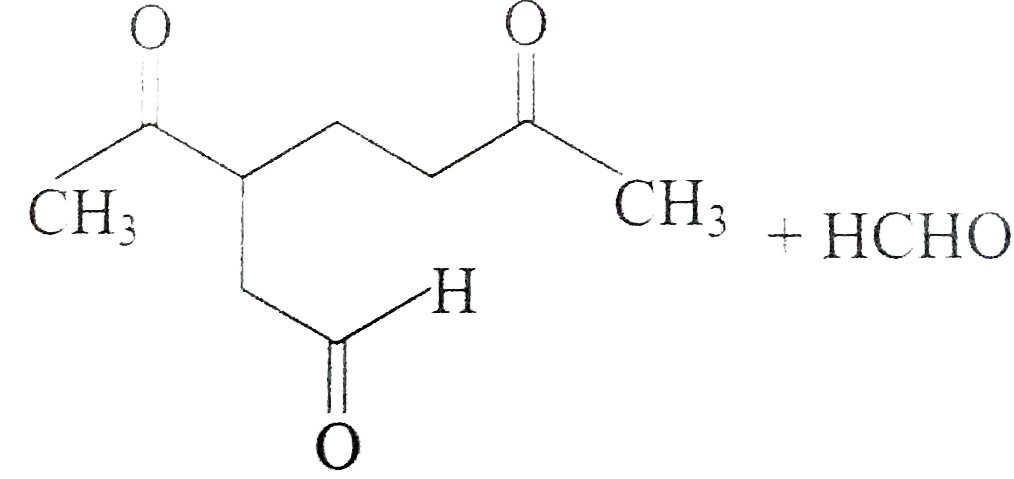
Give probable structure of limonene if it has a six membrane ring.View SolutionOn ozonolysis, an alkene (x) forms two carbonyl compounds namely butan - 2 - one and methanal. The total number of methyl groups present in alkene (x) is
View Solution
Knowledge Check
- Question 1 - Select One
An unsaturated hydrocarbon 'A' adds two molecules of H2 and on reductive ozonolysis gives butane-1, 4-dial, ethanal and propanone. Give the structure of 'A' , write its IUPAC name and explain the reactions involved.
A3-methylocta -2,6 dieneB2-methylocta -2,5-dieneC2-methylocta-2,6-dieneD2-methylocta-3,5-diene - Question 2 - Select One
An unsaturated hydrocarbon on complete hydrogenation gives 1-isopropl-3-methylcyclohexane, after ozonolysis it gives one mole of formaldehyde, one mole of acetone and one mole of 2,4-Dixoxohexanedial.The possible structure of the hydrocarbon may be
A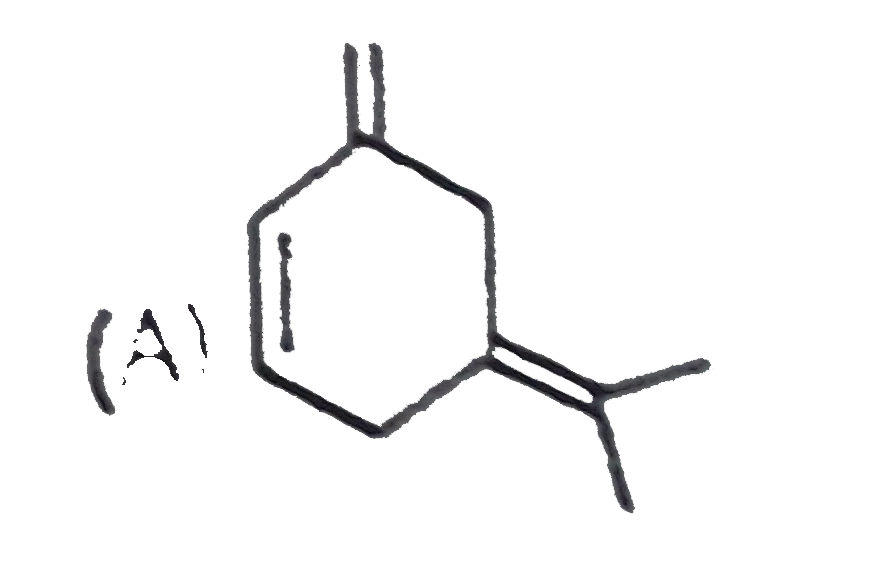 B
B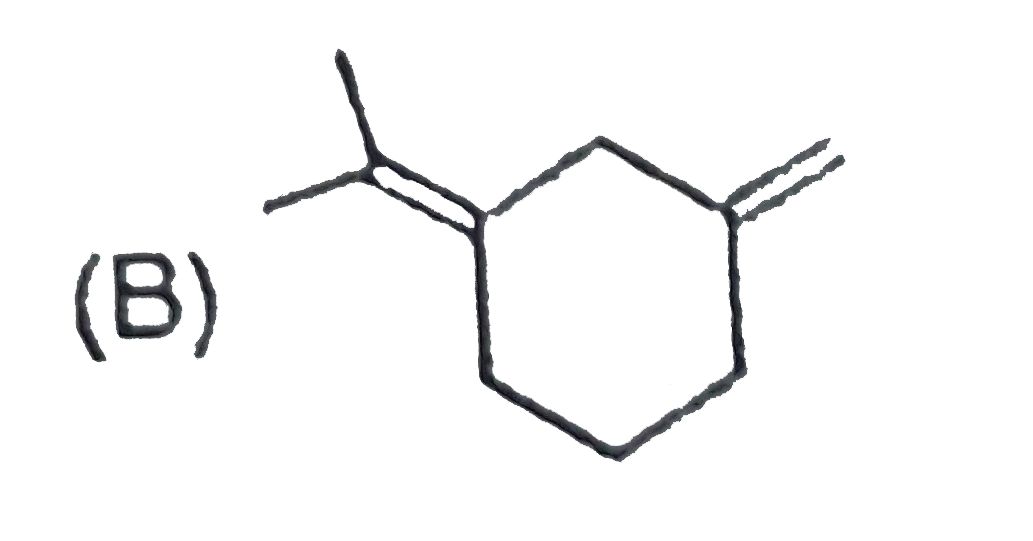 C
C D
D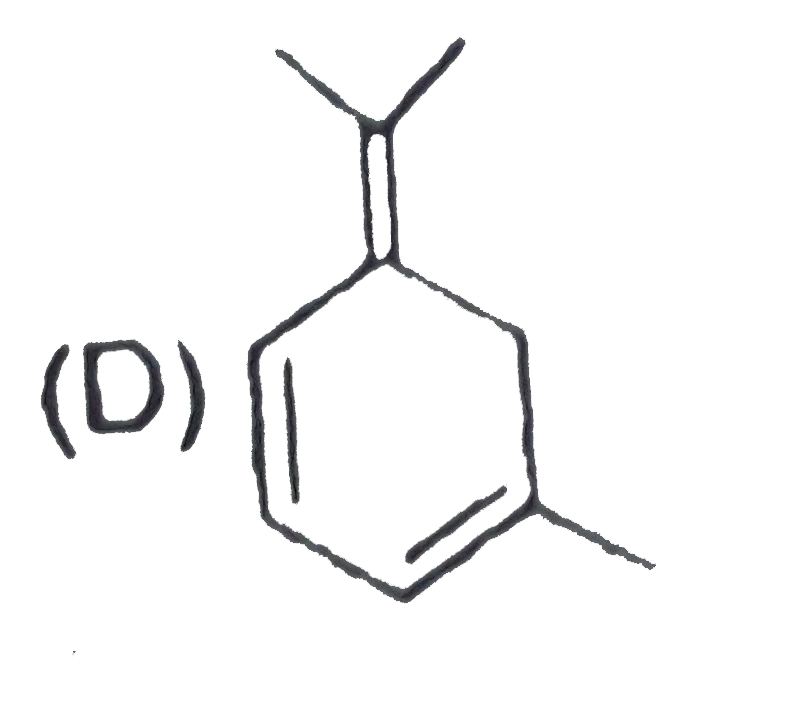
- Question 3 - Select One
A compound X that adds 2 hydrogen molecules on hydrogenation. The compound X also gives 3-oxohexanedioic acid on oxidative ozonolysis. The compound 'X' is:
A B
B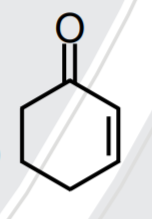 C
C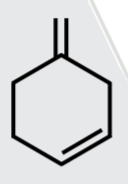 D
D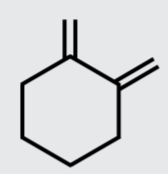
One mole fo X on ozonolysis gave one mole of acetaldehyde and one mole of acetone. The IUPAC name of compound is
View SolutionA hgydrocarbon X adds on one mole of hydrogen to gives another hydrocarbon and also decolourises bromine water.X reacts with KMnO4 in presenece of acid to give two moles of the same carboxylic acid.The structure of X is:
View SolutionAlkenes can be oxidized in presence of different reagents to give different products. Alkenes on oxidation in presence of silver at high temperature give cyclic ethers, which also can be synthesized by using per acids. Alkenes on reductive ozonolysis give carbonyl compounds in presence of zinc and peroxide. On reaction with acidic KMnO4, it also produces corresponding carbonyl compound. Alkynes can also be oxidized in presence of such reagents but the products are different.
A hydrocarbon (C8H8) absorbs two moles of hydrogen in the presence of a platinum caralyst. The reduction product is inert to bromine and KMnO4 solution. The hydrocarbon on ozonolysis produces malonic acid only. The structure of hydrocarbon isView SolutionCompound (A)(C13H24O) is a sex − attractant pheromone two molar equivalents of H2 and is converted to 3−ethyl−7−methyl decan −1−ol. On reductive ozonolysis, it gives the following compounds.

(A) shows two structural isomers, one structure is :

The other structure (A2) is :View SolutionA compound 'X' on ozonolysis form two molecules of HCHO. Compound 'X' is
View Solution

